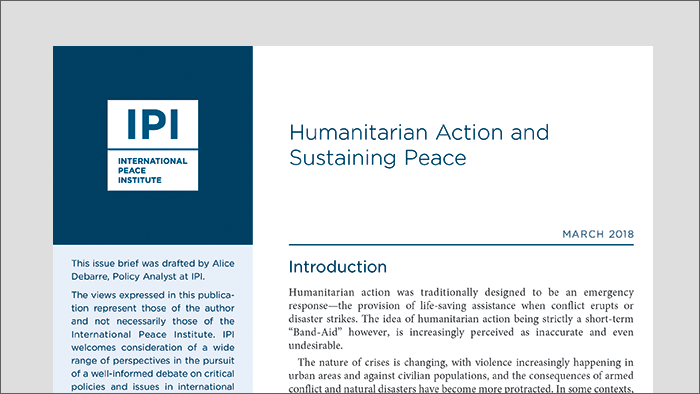
While humanitarian action was traditionally designed to be a short-term emergency response, this is increasingly perceived as inaccurate and even undesirable. Humanitarian actors have acknowledged a responsibility to work toward bridging the “humanitarian-development divide” and not to overlook the nexus between addressing and reducing humanitarian needs and building the foundations for sustaining peace.
This issue brief explores how principled humanitarian action, in synergy with other types of responses and initiatives, can help create the conditions for self-sustaining peace by being conflict-sensitive, leveraging local actors and capacities, and providing context-specific and sustainable aid. It also looks at why humanitarian action can be seen as a building block for peace by providing basic services, reducing tensions, creating a space for dialogue, and putting people’s humanity at the center of operations. Finally, it offers a number of recommendations for peacebuilding and humanitarian actors to make sure their efforts are complementary:
- Humanitarian action must remain guided by the principles of neutrality and independence;
- Policies that address the humanitarian-development divide will help ensure humanitarian action that helps build sustainable services and communities;
- Humanitarian and peacebuilding actors should more closely interact to ensure coordination; and
- Both humanitarian and peacebuilding actors would benefit from exploring further how humanitarian action can contribute to creating the conditions necessary for sustaining peace.







